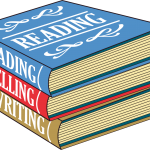Phonics is the first strategy that children should be taught in helping them learn to read. It runs alongside other teaching methods such as Guided Reading and Shared Reading where we explore the meanings of stories and the rich vocabulary within in order to equip children with the necessary skills to develop a love of reading.
The phonics approach teaches children to decode words by sounds, rather than recognising whole words. The emphasis in early years teaching is on synthetic phonics, in which words are broken up into the smallest units of sound (phonemes).
Children are taught the letters (graphemes) that represent these phonemes and also learn to blend them into words. So, at its most basic, children are taught to read the letters in a word like c-a-t, and then merge them to pronounce the word cat. A phoneme can be represented by one, two, three or four letters (such as “ough” in “dough” and “igh” in night).
Children are systematically taught around 40 phonic sounds and the combination of letters used to represent each sound. Most sounds, however, have more than one way to spell them. For example, “e” in “egg” can also be spelt “ea” as in “head” or “ai” as in “said”.
We follow letters and sounds for our phonics and once children move to Phase 5 we begin Phonic families.
We recognise that phonics is but one essential part of developing a child’s ability to read. Understanding the meaning of words and developing a broad and deep vocabulary along with an understanding of different types of writing is key in unlocking the reading potential within each child.


